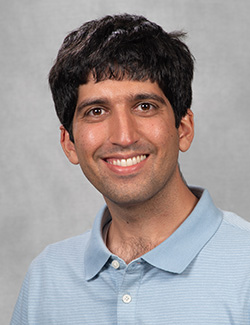Gregory Simonian

Assistant Professor In Residence
Olin Hall 007
(309) 677-3005
gsimonian@bradley.edu
Ph.D. The Ohio State University - Astronomy (2019)
M.S. The Ohio State University - Astronomy (2016)
B.S. California Institute of Technology - Astronomy (2013)
Biography
Gregory Simonian is an astronomer with a broad interest in advancing curiosity in the sciences. He grew up in Los Angeles, where he attended the California Institute of Technology, where he did research on outbursting star systems, particularly Cataclysmic Variables and AM CVn systems. He moved to The Ohio State University to pursue a Ph.D in astronomy. His dissertation research focused on understanding what we can learn about the rotation of stars in the Kepler field, and how that rotation can be affected by binary companions to those stars. While at Ohio State, he was also the instructor of record for a introductory astronomy course. After graduating, Dr. Simonian pursued a passion for teaching at Concord University in Athens, West Virginia. There he taught several courses: introductory astronomy, conceptual physics science, and calculus-based physics lab. After moving to Peoria, he joined the faculty at Bradley University as an Assistant Professor in Residence in Physics, where he currently teaching calculus-based physics.
Teaching Interests
I believe learning is done best by doing, and so I implement an active classroom where students apply the material they learned to see how they connect to larger questions and topics in the sciences. I also try to support students in mastering the material, by providing opportunities for frequent feedback both in-class and online.
Research Interests
My research interests focus on understanding the ultimate formation and demise of binary stars. The main tool I use to do this is by studying stellar rotation, because close-in binary stars are expected to be tidally-locked in their orbits, which means they keep their same face pointed towards the other star, the same way that the moon is tidally-locked and keeps the same face pointed towards the Earth. Because stars in tidally-locked binaries don’t slow down like single stars, rotation can be a powerful tool to identify these tidally-locked systems to be studied further. Because these systems are rare, I am interested in using data science and statistical techniques to efficiently find and understand these binaries by combining and using large catalogs of astronomical data. If you are interested in learning more, please take a look at my personal website.

